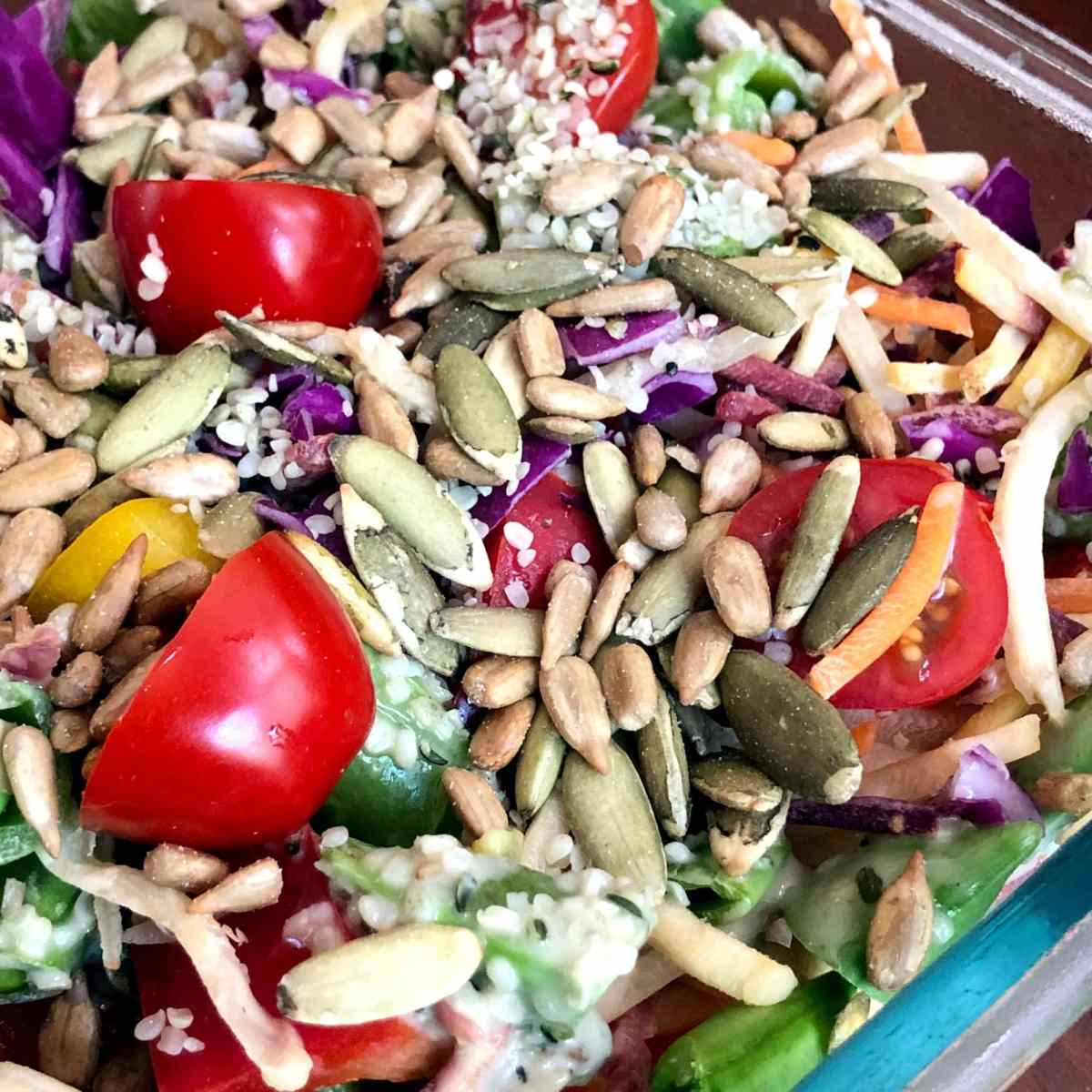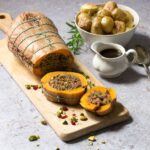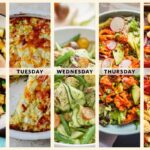Embark on a culinary adventure with vibrant Flexitarian Salad Bowls, each brimming with a protein punch! Imagine a symphony of textures and tastes—crisp greens, juicy proteins, and a tantalizing medley of fresh vegetables, all harmoniously bound together by a perfectly balanced dressing. These aren’t your average salads; they’re a delicious exploration of flexible eating, offering satisfying and nutritious meals adaptable to any dietary preference. Prepare to discover the art of creating beautiful, flavorful bowls packed with goodness.
This guide delves into the creation of three distinct flexitarian salad bowl variations, each showcasing a different protein source – from lean chicken to hearty beans and versatile tofu. We’ll explore detailed recipes, ingredient substitutions, dietary adaptations, and creative presentation ideas, empowering you to craft personalized bowls that nourish your body and delight your senses. Get ready to elevate your salad game!
Ingredient Sourcing and Substitution

The foundation of a truly exceptional flexitarian salad bowl lies in the quality of its ingredients. Using fresh, seasonal produce not only elevates the flavor profile but also maximizes the nutritional benefits, providing a vibrant and wholesome meal. Opting for locally sourced ingredients whenever possible further reduces your environmental impact and supports your local farmers. The freshness and quality of your ingredients directly translate to a more satisfying and nutritious experience.
Base Greens Alternatives
The base greens form the canvas for your culinary masterpiece. A crisp, vibrant base is essential for a successful salad. While mixed greens are a classic choice, exploring alternative options can add exciting textures and nutritional diversity.
- Spinach: Offers a slightly earthy flavor and a tender texture, providing a rich source of iron and vitamins.
- Kale: A heartier green with a slightly peppery bite, kale boasts impressive levels of vitamins A, C, and K.
- Arugula: Adds a pungent, peppery kick, offering a unique flavor profile and a slightly bitter note that complements many ingredients.
Protein Source Alternatives
The protein component is crucial for satiety and provides essential amino acids. Flexitarian diets offer a wide array of options beyond traditional meat sources.
- Lentils: These versatile legumes offer a substantial protein boost and are packed with fiber, adding a hearty texture to your salad.
- Chickpeas: Another excellent legume choice, chickpeas provide a creamy texture and a subtle, nutty flavor. They’re also a good source of plant-based protein and fiber.
- Tofu: A highly adaptable soy-based protein, tofu can be crumbled, cubed, or marinated to complement various flavors and textures within the salad.
Vegetable Alternatives
Vegetables provide crucial vitamins, minerals, and fiber, adding color, texture, and flavor complexity to your salad bowl. Experimenting with diverse vegetables is key to creating a balanced and interesting meal.
- Roasted Sweet Potatoes: Offer a naturally sweet and satisfying addition, providing a contrasting texture to the fresh greens.
- Bell Peppers: Their vibrant colors and crisp texture add a refreshing crunch and a sweetness that balances other flavors.
- Broccoli Florets: A nutrient-dense cruciferous vegetable, broccoli florets add a slightly bitter yet satisfying bite and a boost of vitamins.
Dietary Adaptations and Considerations
Flexitarian salad bowls offer incredible versatility, easily adapting to diverse dietary needs and preferences. By thoughtfully selecting ingredients and making simple substitutions, you can create nutritious and satisfying meals catering to vegan, gluten-free, and low-carbohydrate diets, while still enjoying the vibrant flavors and textures of a hearty salad. Understanding the nutritional profile of the base recipe and its variations is key to maximizing the health benefits.
The nutritional benefits of a well-constructed flexitarian salad bowl are substantial. A typical bowl, featuring a base of leafy greens, a variety of colorful vegetables, a lean protein source (such as grilled chicken or chickpeas), and a healthy fat (like avocado or nuts), provides a balanced intake of macronutrients – carbohydrates, proteins, and fats – along with an array of essential micronutrients, including vitamins, minerals, and antioxidants. The specific nutritional content will vary based on the chosen ingredients, but the overall impact is generally positive, promoting satiety, supporting energy levels, and contributing to overall well-being.
Dietary Adaptation Strategies
This section details how to modify a standard flexitarian salad bowl recipe to accommodate various dietary restrictions. Careful ingredient selection ensures a delicious and nutritionally sound meal for everyone.
| Dietary Restriction | Adaptation | Nutritional Impact | Notes |
|---|---|---|---|
| Vegan | Replace chicken or fish with plant-based protein sources like tofu, tempeh, lentils, chickpeas, or black beans. Use vegan dressings and ensure all other ingredients (e.g., cheese, croutons) are also vegan. | Maintains fiber, micronutrient, and antioxidant content. Protein source changes depending on the plant-based option chosen. | Choose firm tofu or tempeh for a more substantial texture. Lentils and chickpeas add a creamy texture. |
| Gluten-Free | Omit croutons or use gluten-free alternatives. Check labels on dressings and other pre-made ingredients to ensure they are certified gluten-free. | Minimal nutritional impact; primarily eliminates gluten. | Many gluten-free croutons are available, often made from rice or other gluten-free grains. |
| Low-Carb | Reduce or eliminate starchy vegetables like potatoes or corn. Increase the proportion of leafy greens and non-starchy vegetables like broccoli, cauliflower, and peppers. Choose a low-carbohydrate protein source like chicken breast or fish, and limit high-carb dressings. | Reduces carbohydrate intake, increases protein and fiber content. | Be mindful of hidden carbohydrates in some dressings and sauces. |
Presentation and Serving Suggestions
Elevating your flexitarian salad bowls from a simple meal to a culinary masterpiece involves thoughtful presentation and creative serving suggestions. The visual appeal of your creation is just as important as its nutritional value; a beautifully arranged bowl instantly enhances the dining experience. Consider the colors, textures, and heights of your ingredients to create a visually stunning and appetizing presentation.
Creative Presentation Techniques
A vibrant and well-composed salad bowl is more than just a collection of ingredients; it’s a work of art. Consider the use of contrasting colors to create visual interest. For instance, the deep green of spinach or kale contrasts beautifully with the bright orange of roasted sweet potatoes or the vibrant red of cherry tomatoes. Play with textures by incorporating crunchy elements like toasted nuts or seeds alongside softer ingredients like avocado or cooked quinoa. Build height in your bowl by layering ingredients strategically; taller arrangements are more visually appealing. Finally, strategic garnishing adds the finishing touch, elevating the overall presentation.
Garnishing and Plating Techniques
Garnishes aren’t just for looks; they add another layer of flavor and texture. A sprinkle of toasted pumpkin seeds adds a delightful crunch and nutty flavor. A drizzle of a vibrant vinaigrette, perhaps a balsamic glaze, adds visual appeal and a burst of acidity. Fresh herbs, such as finely chopped cilantro or basil, not only enhance the aroma but also provide a pop of color. Consider using edible flowers for an elegant touch, adding both visual interest and subtle flavor. Plating your salad bowls in attractive bowls or on rustic wooden boards further enhances the presentation. For example, a rustic wooden bowl filled with a vibrant salad, garnished with microgreens and a drizzle of tahini dressing, creates a visually stunning and appetizing presentation.
Unique Serving Suggestions
Beyond the bowl itself, the way you serve your flexitarian salad bowls can significantly impact the overall dining experience. Here are three unique serving suggestions to elevate your culinary game.
Serving Suggestion 1: Salad Bowl as a Main Course with a Side of Roasted Vegetables
Imagine a hearty bowl brimming with roasted chickpeas, quinoa, kale, and a medley of roasted root vegetables like carrots and parsnips. The vibrant colors and textures create a feast for the eyes. Serve this alongside a simple side of roasted asparagus, seasoned with a touch of lemon and sea salt. The earthy flavors of the roasted vegetables complement the hearty salad, creating a balanced and satisfying meal. The visual appeal is enhanced by the contrasting colors and textures of the salad and the asparagus, offering a diverse sensory experience.
Serving Suggestion 2: Salad Bowl as a Lighter Lunch with a Side of Crusty Bread
For a lighter lunch, consider a vibrant salad bowl featuring grilled halloumi, mixed greens, cucumber, and a light lemon vinaigrette. The creamy halloumi contrasts beautifully with the crisp greens and refreshing cucumber. Serve this alongside a piece of crusty bread, perfect for dipping into the leftover vinaigrette. The simple elegance of this combination offers a light yet satisfying meal. The visual contrast between the creamy white halloumi, the vibrant greens, and the golden-brown crusty bread creates a delightful visual experience.
Serving Suggestion 3: Incorporating the Salad Bowl into a Larger Meal
Flexitarian salad bowls can easily be incorporated into a larger meal. Consider serving a smaller portion of a hearty salad bowl as a starter before a main course of grilled fish or chicken. The salad’s freshness and vibrancy cleanse the palate, preparing the diner for the main course. For example, a small bowl featuring grilled shrimp, avocado, and mixed greens with a lime dressing, served before a main course of pan-seared salmon, offers a refreshing and visually appealing start to a larger meal. The contrasting colors and textures of the salad and the main course create a sophisticated and balanced dining experience.
From the satisfying crunch of fresh vegetables to the richness of diverse protein sources, flexitarian salad bowls offer a world of culinary possibilities. This guide has equipped you with the knowledge and inspiration to create personalized bowls that are not only delicious and visually stunning but also adaptable to various dietary needs. So, gather your ingredients, unleash your creativity, and embark on a flavorful journey of healthy eating. Experiment with different combinations, and discover your signature flexitarian salad bowl masterpiece!
FAQ Compilation
Can I meal prep these salad bowls?
Absolutely! Prepare the components (proteins, dressings, chopped vegetables) in advance and store them separately. Assemble the bowls just before serving to maintain freshness and optimal texture.
What are some good alternatives to the suggested dressings?
Experiment with lemon-tahini dressing, a creamy avocado dressing, or a light vinaigrette made with your favorite herbs and oils. The possibilities are endless!
How can I make these bowls more filling?
Add quinoa, farro, or other grains for extra fiber and carbohydrates. You can also incorporate roasted sweet potatoes, chickpeas, or lentils for added substance and nutrients.
Are these salad bowls suitable for children?
Yes, with minor adjustments. Choose kid-friendly proteins and vegetables, and cut everything into bite-sized pieces for easier eating. Involve them in the preparation process for a fun and engaging experience!


